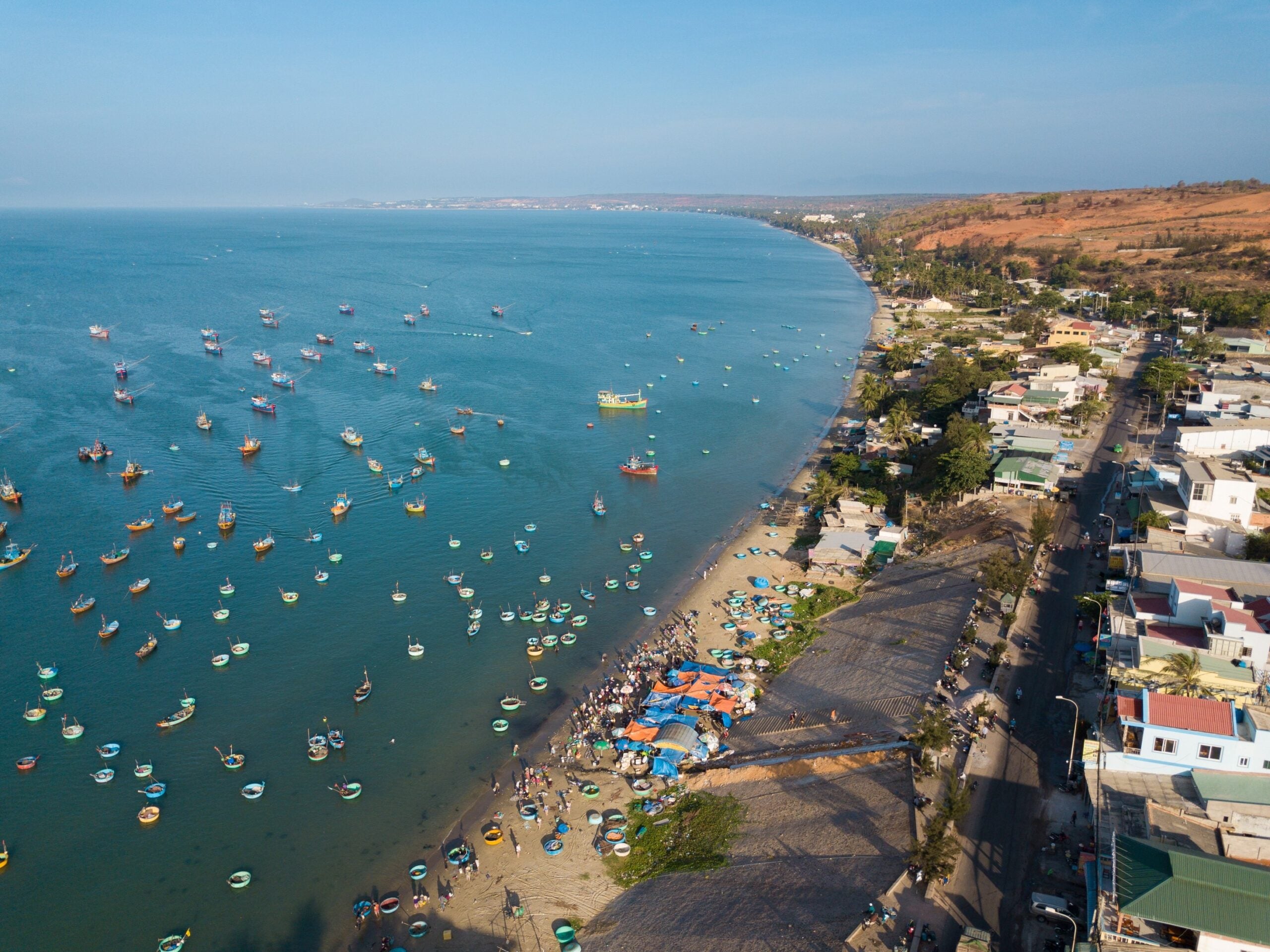Why EDF is exploring marine carbon dioxide removal

The oceans are a massive carbon sink. Researchers, companies and governments are exploring whether we can engineer coastal and ocean systems to store even more carbon. But while the ocean presents us with great possibilities, it’s also a complex system where human interventions can impact everything from the ecological (species’ interactions or the habitats they depend on) to the socio-economic (food systems or economic livelihoods).
EDF has a track record of coordinating collaborative research on natural carbon storage systems in the ocean to understand both their role in carbon sequestration and their potential to generate ecological and socio-economic benefits, as well as any associated risks.
We’re now taking a similarly holistic approach to exploring the potential of technical approaches to marine carbon dioxide removal (or, mCDR). Our aim: to identify the areas with the greatest potential to accelerate innovation with minimal risks to people and nature.
mCDR: different methods to increase carbon sinks
Marine CDR is a manmade intervention in the marine environment that changes the biology, chemistry or physics of the surface ocean resulting in the net removal of carbon dioxide from the atmosphere. A few ideas have been suggested based on existing knowledge of ocean science. For example:
- Using fertilizers like iron sprinkled in the water in large quantities could encourage the growth of phytoplankton, microscopic marine plants, that, by sinking or being consumed, could facilitate the movement of carbon to the deep sea.
- Releasing minerals into surface waters that amplifies the slow natural weathering of rocks like limestone or basalt could help boost ocean’s alkalinity and increase carbon sequestration rates in the ocean.
- Pumping surface water to deeper depths could take carbon dioxide the ocean has absorbed from the atmosphere and mimic the natural process of phytoplankton sinking when they die.
While these innovations seem promising, changing natural processes can result in a host of hard-to-determine impacts. For example, scientists don’t yet know whether artificial fertilization and growth could result in carbon export to the deep ocean. Therefore, we need to be cautious and examine not only the efficacy of carbon removal, but also impacts on marine life and human health. There are also complex ethical considerations associated with undertaking many of these approaches, from economic costs to impacts on livelihoods and food security across both short and long timescales. It’s critical to understand the risks as well as who will benefit, and who will bear the costs as decisions to continue research or deployment are being made.
Why it’s time to examine mCDR’s efficacy and impacts
It’s clear that holding warming below 2 degrees Celsius through emissions reductions and the energy transition alone will be difficult. We see a potential role for mCDR in contributing to stabilizing the climate and reaching net zero goals in the long term, which requires gaining a better understanding of benefits and risks in the short term. More and more organizations are working on mCDR, in large part driven by significant interest in the voluntary carbon market. And while funding is currently focused on evaluating the efficacy of carbon removal, we lack a solid scientific basis upon which to make reasonable decisions.
A strong scientific foundation is critical to speeding and scaling CDR solutions. But speeding and scaling down the wrong path can ultimately reduce confidence in entire solution pathways, as well as lead to environmental harms. EDF wants to help to establish, guardrails, governance and policies to help develop a responsible research program that would allow thoughtful consideration of the full scope of both climate and ecological and socio-economic implications of mCDR development.
EDF applies a systems perspective in examining climate solutions, with mCDR fitting within our existing and complementary efforts related to natural climate solutions, emissions reductions, carbon markets and solar geoengineering methods. We also have a long track record of working with academe, industry, governments, other NGOs, community groups and other civil society organizations to provide society with the understandings required to make science-based decisions.
While EDF is not supporting widespread deployment of mCDR methods at this time, we are engaging in the following ways:
- Assessing research needs, contributing to research, advocating for research code of conduct, and supporting the development of rigorous standards for assessing the safety of any research in this space.
- Examining permitting and regulatory needs to help inform recommendations and policies.
- Developing effective engagement strategies with communities and interested parties around mCDR research.
- Creating a holistic framework to evaluate different benefits, risks and tradeoffs of different types of mCDR.
- Advocating for the developing of a robust federal research initiative on marine CDR
Emissions reduction remains EDF’s number one priority and primary focus. However, as we work to address near term warming and with it limit some of the most worrisome impacts of climate change that we’re already experiencing, we need to research new technologies that show promise. Instead of jumping into mCDR with a Gold Rush mentality, it’s critical to develop an evaluative framework for looking at the impacts of these new technologies across the multiple dimensions that affect the environment and people’s wellbeing and engage civil society in the process.












